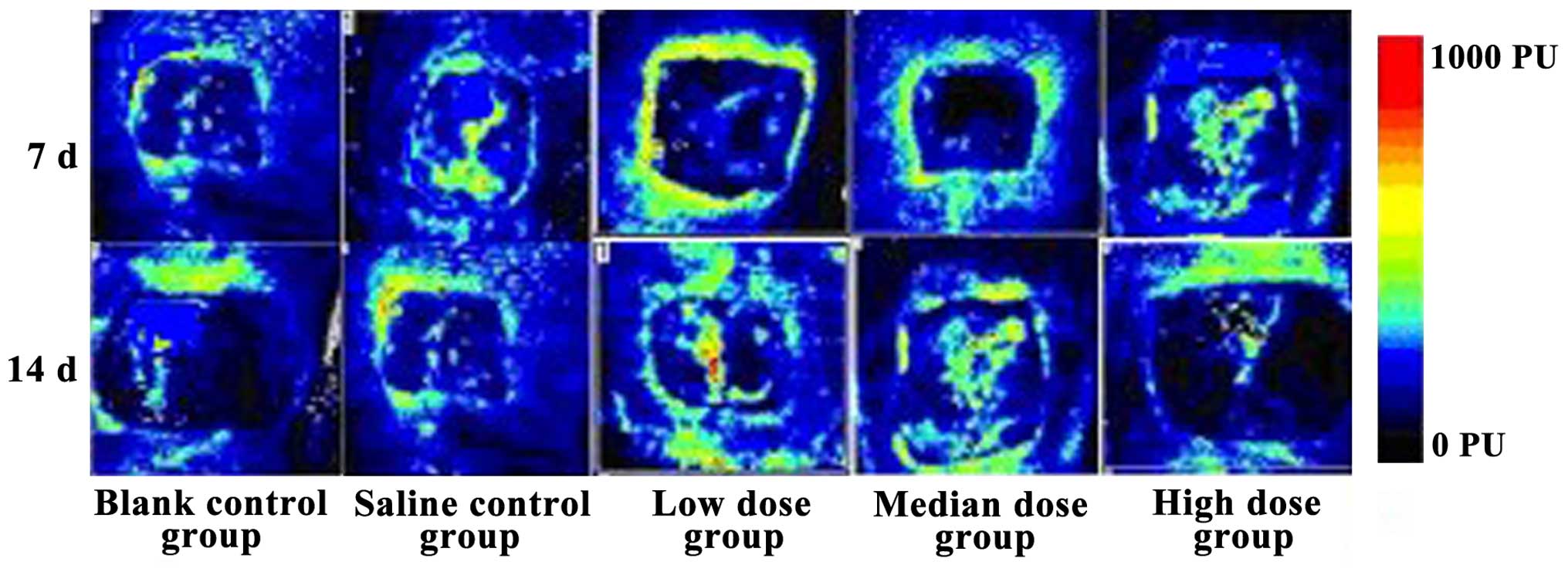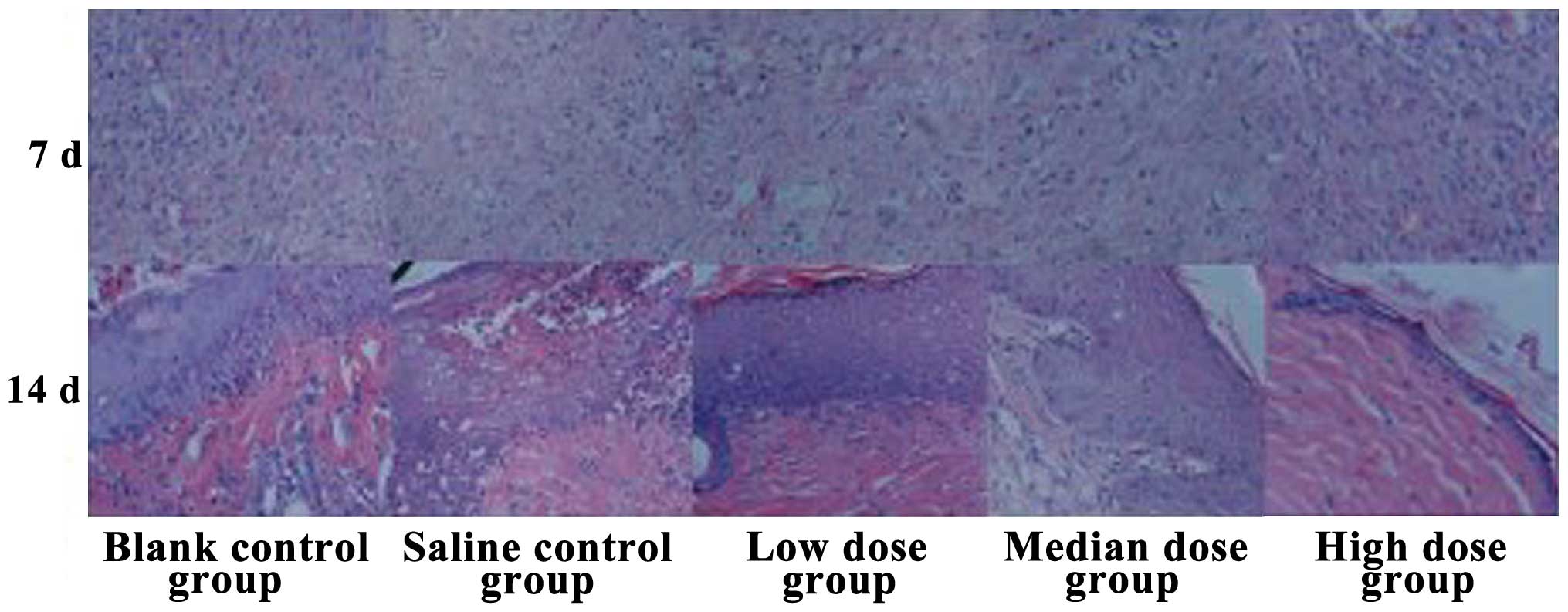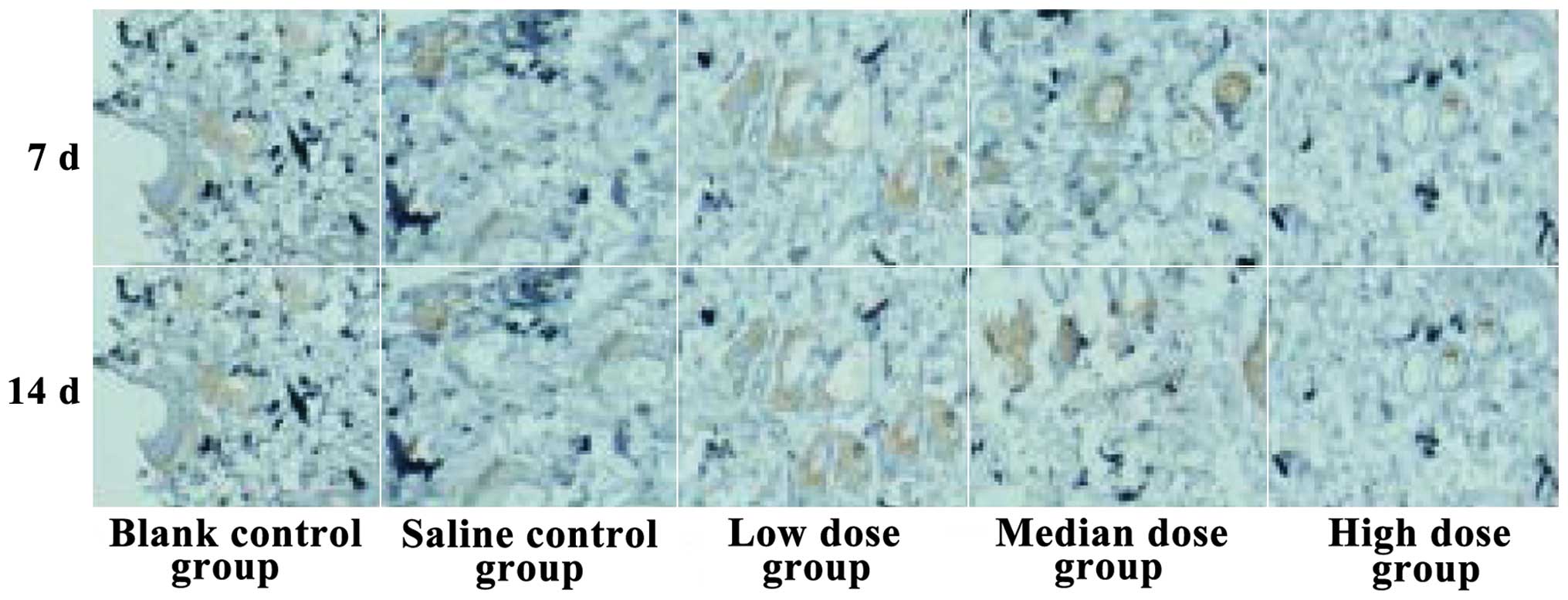Clinical study on local application of low-dose insulin for promoting wound healing after operation for deep burns
- Authors:
- Published online on: September 26, 2016 https://doi.org/10.3892/etm.2016.3749
- Pages: 3221-3226
-
Copyright: © Zeng et al. This is an open access article distributed under the terms of Creative Commons Attribution License.
Metrics: Total
Views: 0 (Spandidos Publications: | PMC Statistics: )
Total PDF Downloads: 0 (Spandidos Publications: | PMC Statistics: )
Abstract
Transplanted free skin flaps are often needed to treat deep burns; their survival, however, is less than optimal. This study examined whether local low-dose insulin injections can promote flap survival and wound healing after surgery. A total of 165 patients who underwent free skin flap transplantation for simple deep burns were enrolled in the study and divided into 5 groups of 33 patients each: Blank control group (no local subcutaneous drug injections), saline control group (saline injections), low‑dose insulin group (0.5 units regular insulin injections), medium‑dose group (1.0 units regular insulin injections) and high‑dose group (2.0 units regular insulin injections). Wound healing and flap survival conditions were assessed and compared among groups. The best wound healing rate found was that of the low‑dose insulin injection group where all the parameters measured improved significantly: The healing time was shorter; the blood flow volume, the flap survival, the number of fibroblasts and new vessels increased; the re‑epithelialization occurred faster; the infiltration of inflammatory cells was reduced; the expression levels of heat shock protein‑90, vascular endothelial growth factor, transforming growth factor‑β and interleukin‑1 were higher; and the plasma glucose levels only fluctuated slightly. The results clearly demonstrate that a local low-dose insulin regime after flap transplantation can accelerate the healing time and improve the surgical outcome without exerting detrimental secondary effects on the glucose plasma level of deep burn patients.












